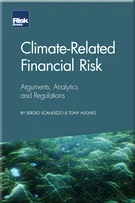Optimal Currency Composition of Debt 1: Protect Book Value
Foreword
Introduction
Theory and Practice of Corporate Risk Management
Theory and Practice of Optimal Capital Structure
Introduction to Funding and Capital Structure
How to Obtain a Credit Rating
Refinancing Risk and Optimal Debt Maturity
Optimal Cash Position
Optimal Leverage
Introduction to Interest Rate and Inflation Risks
How to Develop an Interest Rate Risk Management Policy
How to Improve Your Fixed-Floating Mix and Duration
Interest Rates: The Most Efficient Hedging Product
Do You Need Inflation-linked Debt?
Prehedging Interest Rate Risk
Pension Fund Asset and Liability Management
Introduction to Currency Risk
How to Develop Currency Risk Management Policy
Translation or Transaction: Netting Currency Risks
Early Warning Signals
How to Hedge High Carry Currencies
Currency Risk on Covenants
Optimal Currency Composition of Debt 1: Protect Book Value
Optimal Currency Composition of Debt 2: Protect Leverage
Cyclicality of Currencies and Use of Options to Manage Credit Utilisation
Managing the Depegging Risk
Currency Risk in Luxury Goods
Introduction to Credit Risk
Counterparty Risk Methodology
Counterparty Risk Protection
Optimal Deposit Composition
Prehedging Credit Risk
xVA Optimisation
Introduction to M&A-related Risks
Risk Management for M&A
Deal-contingent Hedging
Introduction to Commodity Risk
Managing Commodity-linked Revenues and Currency Risk
Managing Commodity-linked Costs and Currency Risk
Commodity Input and Resulting Currency Risk
Offsetting Carbon Emissions
Introduction to Equity Risk
Hedging Dilution Risk
Hedging Deferred Compensation
Stake-building
Large multinational companies can issue debt in multiple currencies, and one of the most frequently asked questions is: what should be the optimal mix of debt by currency? Even once the debt has been issued, it is not too late to synthetically change the currency composition via cross-currency swaps.
Companies that optimise their debt mix typically have one of two main objectives.
-
-
Protect the book value of equity: Some companies decide to protect the book value of equity by minimising the mismatch between the assets and debt by currency.
-
-
-
Protect the leverage: Others protect the leverage by minimising the currency mismatch between the debt and EBITDA or assets. This stabilises ratios such as net debt to EBITDA or net debt to assets.
-
What do companies care most about: reducing the volatility of the book value of equity or leverage? Reducing the volatility of the income statement would be easier to understand since earnings of publicly listed companies are heavily scrutinised by both investors and analysts. However, under IFRS 9 it is hard to protect consolidated EBITDA from the FX volatility of foreign subsidiaries. Therefore, who monitors
Copyright Infopro Digital Limited. All rights reserved.
As outlined in our terms and conditions, https://www.infopro-digital.com/terms-and-conditions/subscriptions/ (point 2.4), printing is limited to a single copy.
If you would like to purchase additional rights please email info@risk.net
Copyright Infopro Digital Limited. All rights reserved.
You may share this content using our article tools. As outlined in our terms and conditions, https://www.infopro-digital.com/terms-and-conditions/subscriptions/ (clause 2.4), an Authorised User may only make one copy of the materials for their own personal use. You must also comply with the restrictions in clause 2.5.
If you would like to purchase additional rights please email info@risk.net









